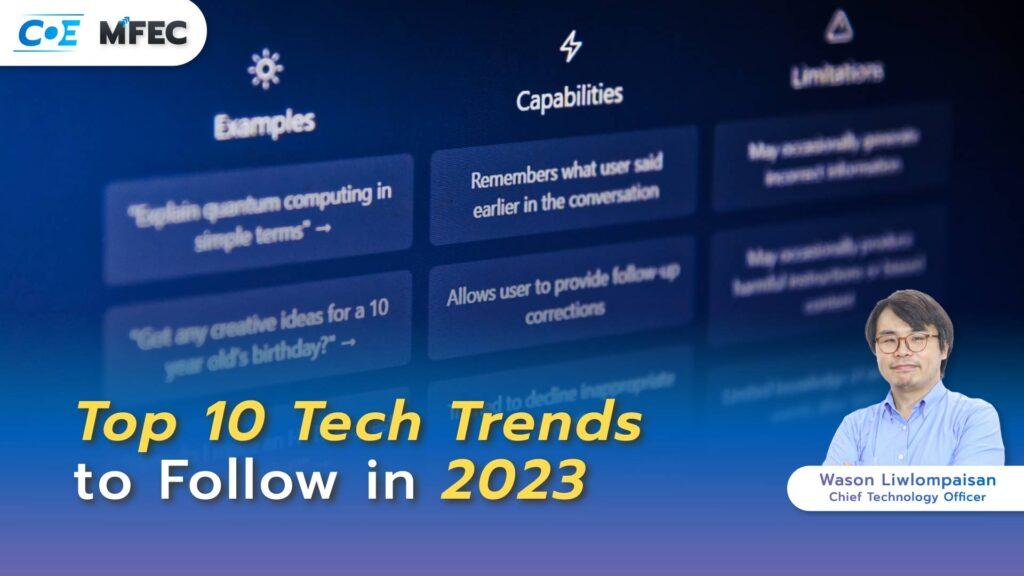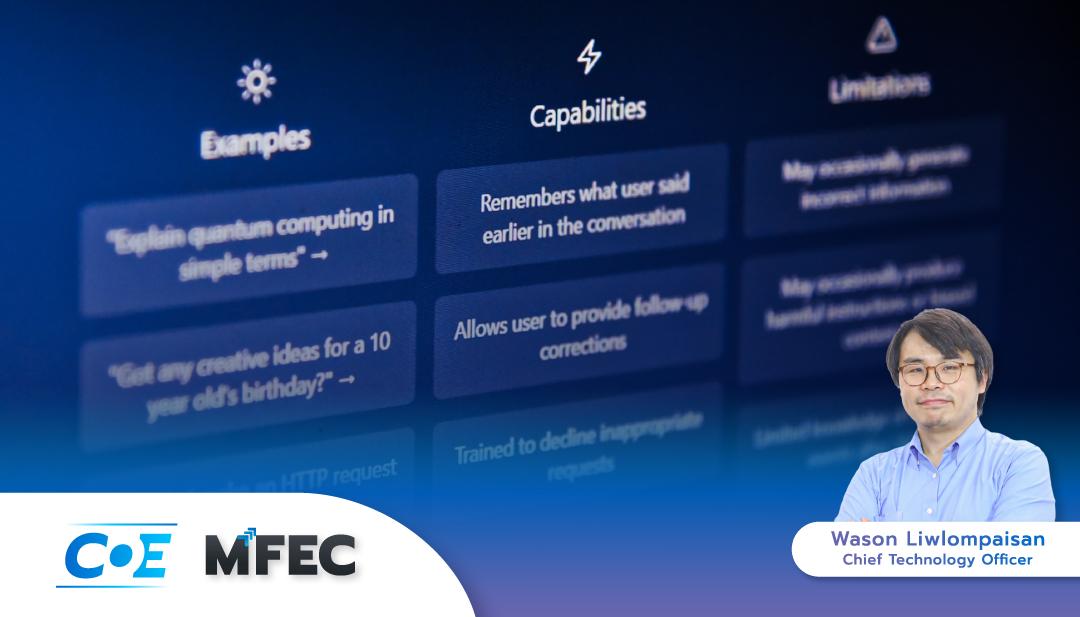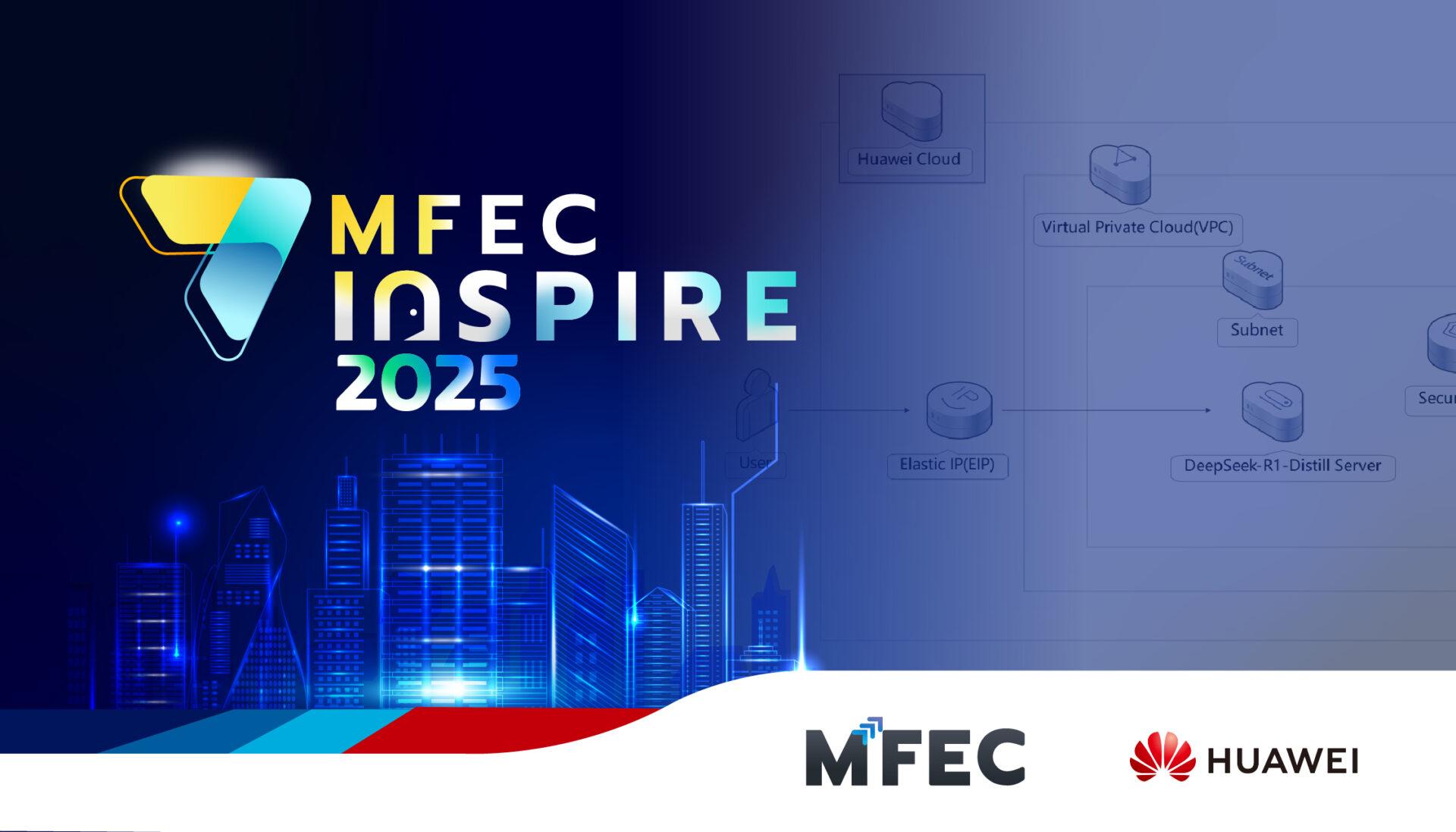Mr. Wason Liwlompaisan, Chief technology Officer at MFEC, shared his insights on technology trends in 2023 at National Coding Day 2023.
In the past few years, there have been significant changes in tech industry such as Chatbot AI that can understand human languages and convert them into computer readable data, frontend and backend developments that are the future of software development, accessibility, and many more.
1. Chatbot
Chatbot is a currently a trending technology. Developers now use AI chatbot or language model for more than answering simple questions; they use AI for business management, writing emails, proofreading, and software development.
Many developers use AI to help with coding. For example, ChatGPT-3 is used to create commit messages. GPT-3 generates commit messages according to input Div from developers. Commit messages like “fix bug” or “new feature” will no longer be used in order to create a more effective commit message.
Large language model AI is also good at understanding human language and converting them to computer readable data. For example, we can make ChatGPT read a comment from any website and convert the comment into a JSON file. This makes it possible to create business intelligence in a deeper aspect than ever.
2.Matter Protocol
In the past 2 years, the one of main selling points of modern houses is the smart home system built into the houses. But there are many concerns for those installed system. The users couldn’t be sure whether the vendors will develop their ecosystem in the long run. They couldn’t be sure how long the software will be supported, or could they find replacement when some lightbulbs go bad.
Matter is the protocol supported by all major vendors like Amazon, Apple, or Google. Matter will make all IoT devices interoperate with other devices from any vendor. This will make installing IoT less risky. One could change IoT enabled lightbulb in the same manner as the normal lightbulbs. Even though, there is no major vendor make Matter-supported devices yet, many announced to support Matter on the old devices via firmware upgrade.
3. Low-code Development Platform
Low-code software is not something new. Microsoft Power Apps has been in the market since 2015. However, due to the shortage of programmers in recent years, more and more organizations are adopting Low-code. Even SAP launched its own low-code platform in 2022.
In the past few years, open-source low-code platform has grown significantly. Major open-source platforms like ToolJet, Budibase, and Appsmith gain a lot of popularity during COVID-19. The developments in these platforms are rapid, features are added to support many use cases, and the companies behind these projects are well funded. The situation makes it possible for low-code platforms to become a significant part of software development.
4. Backend Technology
Backend-as-a-Service (BaaS) is a platform that enables developers to build an application without having to do backend coding. There are several services that are already well-known and have been in the market for a while like Firebase and AWS Amplify. These services cover repetitive process like database service with role-based access to data, registration system, login system, and backed management for administrators, and are alternatives for some business that don’t want to use cloud services. In the past few years, these platforms have been gaining popularity rapidly, similar to Low-Code platform. Examples of open-source platforms that are widely used are Supabase which has been around for a long time, Appwrite and Pocketbase, newcomers that are extremely popular due to their small size.
5. Serverless
Serverless is a technology that has been in the market since 2014. It is a service that allows us to pay according to the actual usage instead of estimated monthly cost. In 2022, there was a big change. Serverless started to fully support major frameworks. As a result, it is likely that serverless will become more involved in web development in the future.
6. WebAssembly (WASM)
WebAssembly or WASM is a technology that allow native software to run on browsers. In recent year, many projects adopt WASM as a server-side platform. Some even used it as a replacement for Docker. Docker Desktop itself now supports WASM in Technical Preview. Software compiled to WASM is tended to be smaller than those packed into container and most of them could start in an instant.
7. SQLite and PostgreSQL
Open-source database has been gaining popularity. Recently, there were new developments in 2 projects. SQLite is a small database that is only 400 KB in size and has been used more with full-stack applications. Additionally, last year, WordPress experimented with supporting SQLite in its platform. In the future, we might be able to use WordPress without external SQL server. Apart from that, Google are working on SQLite for WebAssembly where developers can launch applications with SQL database on browsers. Still, SQLite is lacking in performance when it has to handles heavy workloads which is the area that the SQLite team is currently working on.
As for PostgreSQL, its popularity has been growing in recent years. Stack Overflow surveys shows that PostgreSQL is the first choice of professional users. For big market like this, this is a massive development. There are many contributors in PostgreSQL community who contributes to the platform through significant projects like AWS Babelfish which adds new feature to PostgreSQL to become a partial alternative to Microsoft SQL Server.
8. Goodbye Third-Party Cookies. Hello Privacy Sandbox
It is highly expected that 3rd party cookies will no longer be used or significantly less used and will be replaced with Privacy Sandbox following to Google’s announcement on the matter. Google is promoting Privacy Sandbox, a technology that identifies use interest and make ways for targeted advertisement. Instead of tracking user web browsing activities to predict their interests, marketers can now get topic of interests from Privacy Sandbox which analyzes the data from browsers or mobiles. Developers can query data from browsers to know user usages and interests and shows advertisements accordingly.
9. Passkeys
In recent years, passwords have been a weak link in security, and there had been many approaches to minimize the risks from password leaks. Passkeys is a technology that suggests all online services to stop using passwords entirely. Passkeys is similar to FIDO U2F security key that has been around for many years. However, the only difference is Passkeys does not require USB key. In 2022, Google, Microsoft, and Apple created an agreement to use smart phones as a login key. Users can now use their phone to scan QR code on browsers to login.
10. Accessibility
Accessibility is a design practice of making services available to as many people as possible. Several companies are starting to apply accessibility to their design process. For example, Sony PlayStation Controller has features supporting all kinds of users; new games come with assistant menus to support people with disabilities such as high contrast adjustment to help people with visual impairment differentiate elements better.
Although not all application is significant like a specific hardware design by Sony and Microsoft, the trend of accessibility is definitely the way to go. Some examples of simple applications are designing websites that use AI to convert text to speech to support users who cannot read from the screen due to various reasons such as visual impairment or driving. Designing applications or services to cover as many users as possible is another important trend to look out for in 2023.
“Although we cannot predict the future of technology, we can learn from changes that happens now to prepare for what’s about to come.”
#MFEC #Technology #Nationalcodingday #2023







